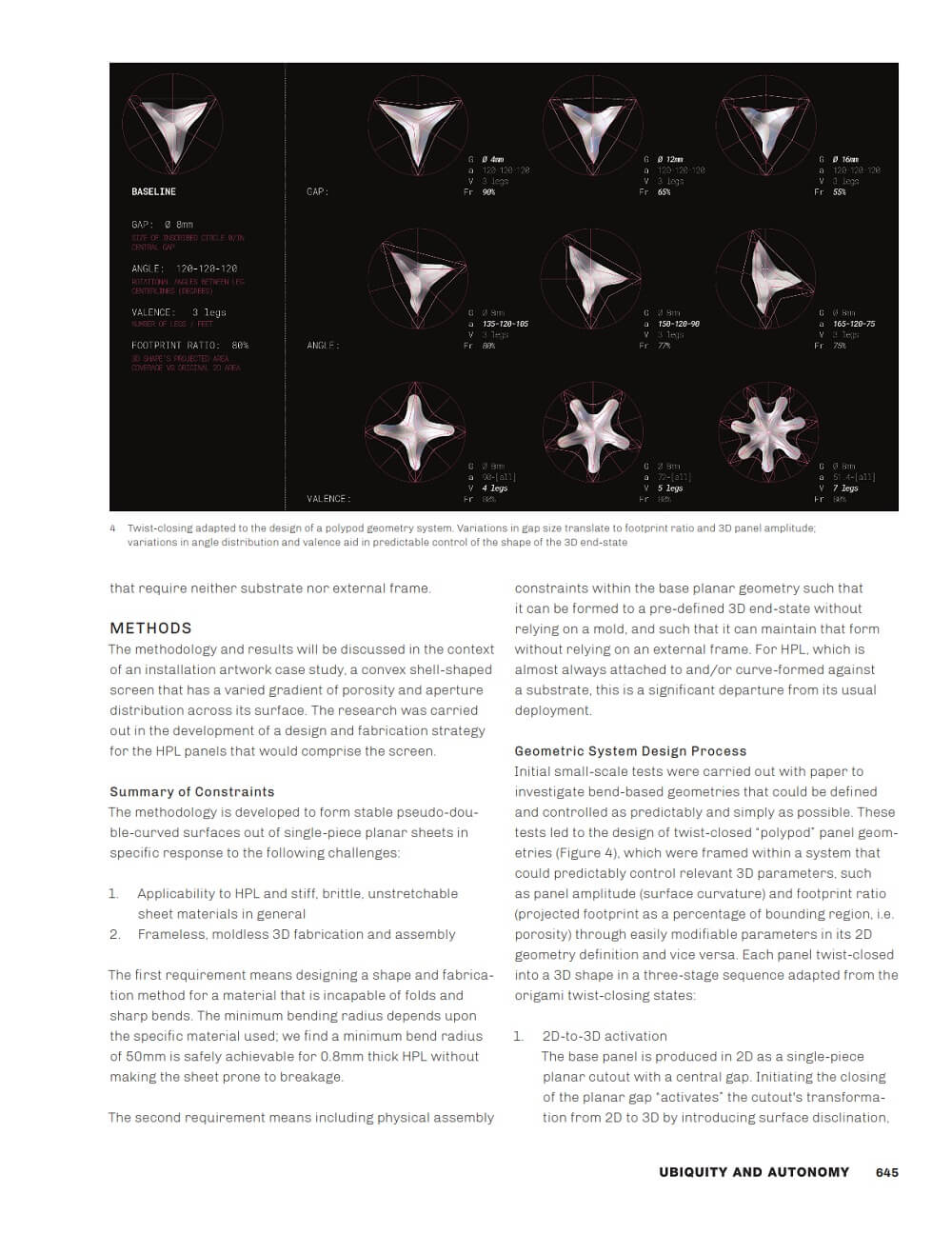Laminar Assemblies
 This paper by Pamela Dychengbeng Chua and Lee Fu Hui presents an innovative approach to the design and fabrication of three-dimensional objects from single-piece flat sheets, inspired by the origami technique of twist-closing. While in origami twist-closing is merely used to stabilize a cylindrical or spherical structure, ensuring it maintains its shape, this research investigates the potential of twist-closing as a multi-functional mechanism that also activates and controls the transformation of a planar surface into a predesigned three-dimensional form. This exploration is directed towards an intended application to stiff and brittle sheet materials that are difficult to shape through other processes. The methods we have developed draw mainly upon principles of lattice kirigami and laminar reciprocal structures.
This paper by Pamela Dychengbeng Chua and Lee Fu Hui presents an innovative approach to the design and fabrication of three-dimensional objects from single-piece flat sheets, inspired by the origami technique of twist-closing. While in origami twist-closing is merely used to stabilize a cylindrical or spherical structure, ensuring it maintains its shape, this research investigates the potential of twist-closing as a multi-functional mechanism that also activates and controls the transformation of a planar surface into a predesigned three-dimensional form. This exploration is directed towards an intended application to stiff and brittle sheet materials that are difficult to shape through other processes. The methods we have developed draw mainly upon principles of lattice kirigami and laminar reciprocal structures.
 These are reflected in a workflow that integrates digital form-generation and fabrication-rationalization techniques to reference and apply these principles at every stage. Significant capabilities of the developed methodology include: (1) achievement of pseudo-double-curvature with brittle, stiff sheet materials; (2) stabilization in a 3D end-state as a frameless self-contained single-element laminar reciprocal structure—essentially a compliant mechanism; and (3) an ability to pre-encode 3D assembly constraints in a 2D cutout pattern, which guides a moldless fabrication process. The paper reviews the precedent geometric techniques and principles that comprise this method of 3D surface fabrication and describes a sample deployment of the method as applied to the design of laminar modules made of high-pressure laminate (HPL).
These are reflected in a workflow that integrates digital form-generation and fabrication-rationalization techniques to reference and apply these principles at every stage. Significant capabilities of the developed methodology include: (1) achievement of pseudo-double-curvature with brittle, stiff sheet materials; (2) stabilization in a 3D end-state as a frameless self-contained single-element laminar reciprocal structure—essentially a compliant mechanism; and (3) an ability to pre-encode 3D assembly constraints in a 2D cutout pattern, which guides a moldless fabrication process. The paper reviews the precedent geometric techniques and principles that comprise this method of 3D surface fabrication and describes a sample deployment of the method as applied to the design of laminar modules made of high-pressure laminate (HPL).





























Comments